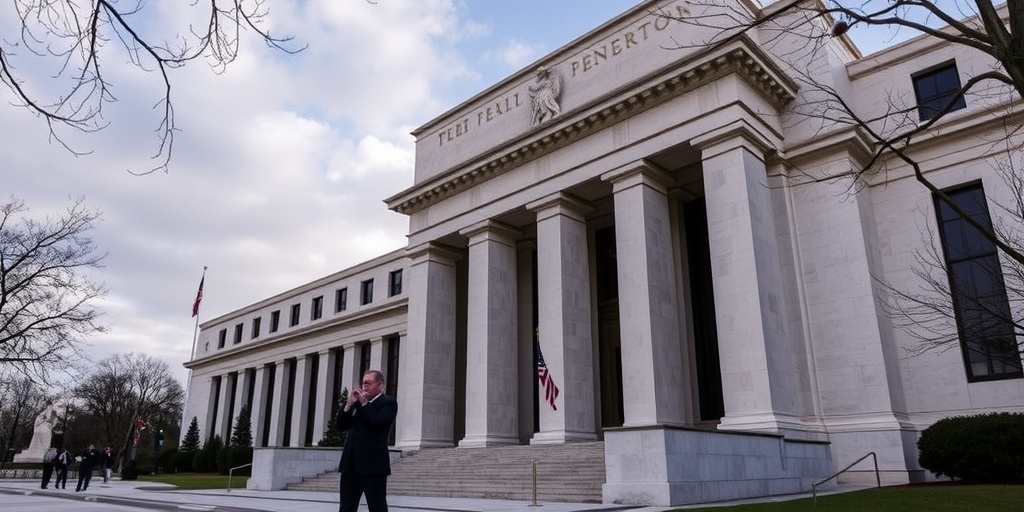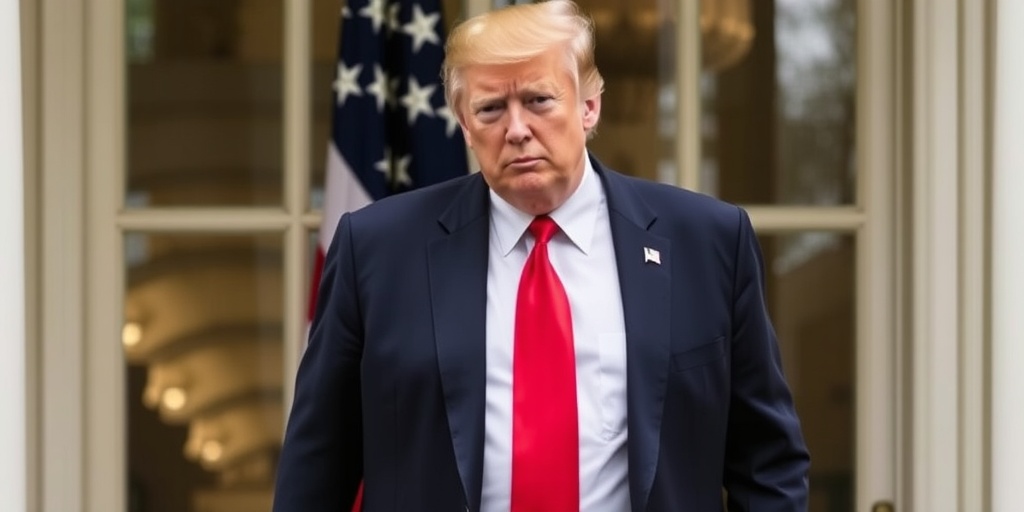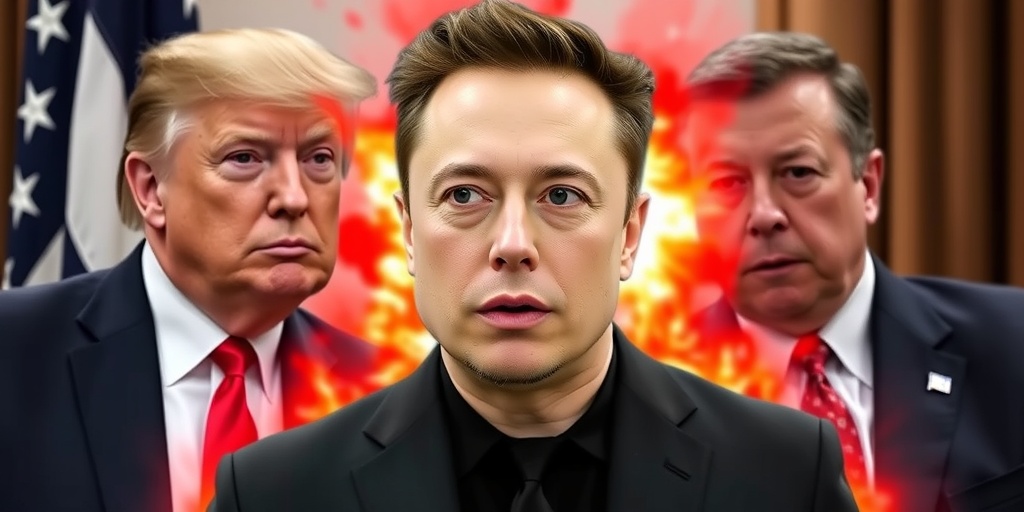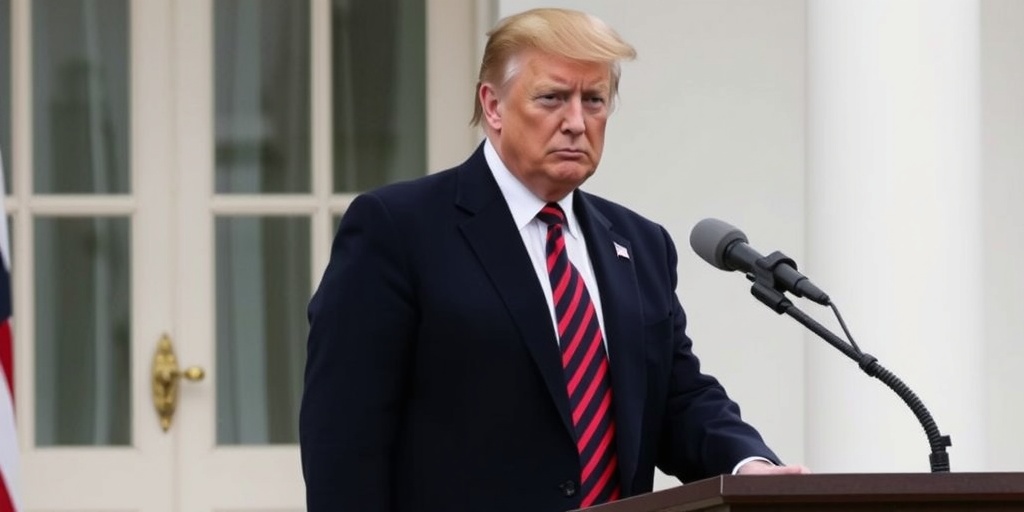Now Reading: Fed Cautious on Rate Changes Amid Trump Policy Uncertainty
-
01
Fed Cautious on Rate Changes Amid Trump Policy Uncertainty
Fed Cautious on Rate Changes Amid Trump Policy Uncertainty

Federal Reserve Chair Powell Emphasizes Cautious Approach Amid Economic Uncertainty
Jerome H. Powell, the chair of the Federal Reserve, recently outlined the central bank’s focus on the overarching implications of President Trump’s expansive economic policies amid heightened uncertainty regarding their actual implementation. In a speech at a recent event, Powell asserted that the Fed is not in a rush to modify interest rates, indicating a wait-and-see approach as new information comes in.
“As we analyze the incoming data, our goal is to distinguish the essential signals from the noise as the economic outlook develops,” Powell remarked. He expressed confidence that the Fed can maintain a policy of restraint for an extended period, especially if inflation remains stubbornly high while the economy shows resilience. However, he acknowledged that should the labor market deteriorate more significantly than anticipated or if inflation were to decline swiftly, the Fed stands ready to adjust its policies accordingly.
Powell’s statements reflect the precarious balancing act the central bank must navigate during a particularly sensitive time for the economy. The national landscape has shifted dramatically, with various economic measures causing both optimism and concern among policymakers and the public.
During the same event, Michelle Bowman, a member of the Fed’s Board of Governors, echoed Powell’s sentiments by stating that, as inflation trends back toward the central bank’s 2 percent target, macroeconomic variables such as the labor market and overall economic activity will play an increasingly vital role in policy deliberations. The Fed is widely expected to maintain interest rates in the range of 4.25 percent to 4.5 percent when officials convene on March 18-19, continuing the pause that has been in effect since January. However, the potential for more contentious decisions looms, particularly if economic growth falters while price pressures continue to escalate.
Currently, the impact of Trump’s tariffs on the economy remains uncertain. Recently, the president has shown inconsistency regarding the tariffs imposed on Mexico and Canada, although he has left open the option for retaliatory tariffs and other penalties on commodities like aluminum and steel. The economic ramifications of these tariffs depend heavily on their duration and the extent to which other nations react with protective measures and how businesses and consumers adjust to increased costs.
Further complicating the Fed’s assessment, Trump’s agenda includes policies such as mass deportations and significant cuts to government spending, both of which are anticipated to hinder growth. Conversely, the tax cuts and deregulation initiatives may provide some support to business activity, although the potential benefits remain unclear.
Despite the uncertainties, the Fed is somewhat reassured by the strength of the economy inherited from Trump’s predecessor. Recent data indicates that hiring remained stable in February, while the unemployment rate slightly increased to 4.1 percent, suggesting that the economy is relatively robust and may require a substantial economic shock to trigger a recession.
Nonetheless, the current volatility in the economic landscape has raised alarms about growth prospects. Surveys tracking consumer sentiment reveal a notable decline in confidence among Americans, and many economists have reduced their forecasts for economic growth. Policymakers are closely monitoring these trends, recognizing that a wane in public confidence could signal deeper issues.
Patrick T. Harker, president of the Philadelphia Fed, emphasized the need for vigilance, pointing out the inherent threats to the ongoing economic expansion, despite currently low unemployment and steady growth. Similarly, Fed governor Christopher J. Waller remarked on the potential for disappointing economic performance, noting that recent sentiment measures suggest that the real economy might not be as healthy as previously thought.
Despite these concerns, Powell chose to adopt a more optimistic perspective during his remarks, asserting that, “despite elevated levels of uncertainty, the U.S. economy continues to be in a good position.” He added that sentiment metrics have not reliably predicted consumption growth in recent years, suggesting that the Fed might navigate these trends with caution.
Americans are increasingly preparing for higher consumer prices, compounded by concerns about an overall slowdown in growth, which presents a challenging environment for the Federal Reserve. Having previously struggled to respond effectively to inflation during the pandemic, the Fed is wary of repeating past mistakes. Following Trump’s re-election, central bank officials have raised their inflation forecasts for the year and some analysts have linked these anticipated price increases directly to the president’s policies.
Powell noted that rising inflation expectations among consumers have been fueled by the imposition of tariffs, though he emphasized that long-term indicators of inflation remain stable. John C. Williams, president of the New York Fed and a close ally of Powell, has predicted that tariffs will contribute to higher consumer prices, a view echoed by Waller, who conceded that the effect of the new tariffs could be more significant than initially expected.
The latest Beige Book from the Fed illustrates widespread apprehension among businesses, with most respondents across the central bank’s twelve districts indicating plans to raise prices in response to ongoing tariffs, with some companies even initiating price hikes preemptively.
In summary, as the Federal Reserve grapples with the complex interplay of domestic and global economic factors, officials are committed to holding rates steady until clear evidence emerges that inflation is moving back toward target levels or significant deterioration in the labor market occurs. Financial markets are currently anticipating that these conditions may be met by the June meeting, potentially allowing the Fed to implement a rate cut of up to 0.75 percentage points this year.
Stay Informed With the Latest & Most Important News
Previous Post
Next Post
-
 01New technology breakthrough has everyone talking right now
01New technology breakthrough has everyone talking right now -
 02Unbelievable life hack everyone needs to try today
02Unbelievable life hack everyone needs to try today -
 03Fascinating discovery found buried deep beneath the ocean
03Fascinating discovery found buried deep beneath the ocean -
 04Man invents genius device that solves everyday problems
04Man invents genius device that solves everyday problems -
 05Shocking discovery that changes what we know forever
05Shocking discovery that changes what we know forever -
 06Internet goes wild over celebrity’s unexpected fashion choice
06Internet goes wild over celebrity’s unexpected fashion choice -
 07Rare animal sighting stuns scientists and wildlife lovers
07Rare animal sighting stuns scientists and wildlife lovers





















